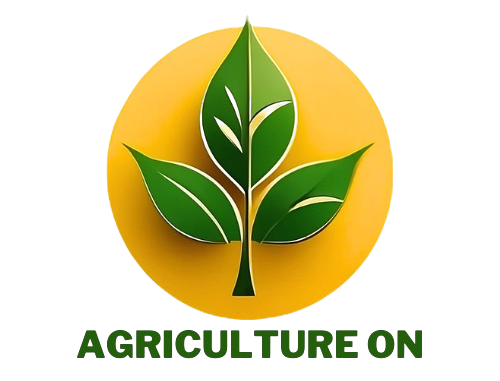Vegetable cultivation. I remember the decision to start my organic garden. I was dissatisfied with the supermarket vegetables, loaded with pesticides. I wanted to grow healthy food, connect with the soil, and share it with my family. This guide to vegetable gardening transformed my life.

Key highlights
- Learn how to plan and set up an organic garden step by step.
- Explore the nutritional and environmental benefits of growing healthy foods.
- Discover techniques for soil preparation, planting, fertilization, and natural pest control.
- Get insights into the best companion planting and crop rotation practices.
- Become self-sufficient by growing fresh, pesticide-free vegetables.
The importance of home organic farming
Home organic farming is an excellent option for improving health and protecting the environment. By growing organic vegetables in our gardens, we can consume healthier foods. They are free of harmful chemicals, contributing to nature conservation and a healthier lifestyle.
Health and environmental benefits
Organic vegetables are richer in vitamins, minerals, and antioxidants compared to conventionally grown produce. This is because they are grown without harmful chemicals, allowing natural nutrients to thrive. Sustainable horticulture also protects local biodiversity, maintains healthy ecosystems, and reduces pollution.
Advantages of growing your own food
Growing your own vegetables at home has numerous benefits. You control the quality and freshness of your produce. It also helps reduce food waste and the environmental impact of transportation and storage.
Economy and sustainability
Home organic farming is both economical and sustainable. By producing your own food, you save money and support small farmers by fostering local economies.

Initial planning for a vegetable garden
Fresh food cultivation in home gardens is on the rise in Brazil, reflecting a desire for a healthier lifestyle connected to nature. Proper initial planning is crucial for success.
Choosing the location and layout
Selecting the right spot is essential. Consider sunlight exposure, ventilation, and access to water. Plan the layout of your garden, organizing beds and paths for better accessibility.
Necessary supplies
Gather all the essential tools and materials like seeds, seedlings, shovels, watering cans, and organic fertilizers. Soil analysis and preparation with organic compost are vital to ensure fertility and healthy plant growth.
Selecting plants to grow
Consider factors like climate, available space, and maintenance time when choosing which vegetables to plant. Proper planning will help your garden thrive, bringing health and environmental benefits.
Basic principles of vegetable gardening
Home gardening offers fresh, nutritious produce and promotes sustainability. Starting involves learning the basics:
- Understanding plant anatomy and physiology to care for roots, stems, and leaves effectively.
- Providing adequate nutrition with the right balance of macro and micronutrients.
- Preparing the soil properly, considering its composition, pH, and organic content.
Tools and equipment for success
Investing in the right tools ensures the success of your garden. A complete toolkit can simplify tasks and enhance productivity.
Essential tools
- Multi-purpose spade
- Hoe
- Watering can
- Garden hose
- Manual sprayer
- Shading screen
Maintenance of equipment
Regularly maintain tools for efficiency. Composting and soil preparation also play a role in sustainable gardening. Advanced equipment like small tillers or modern irrigation systems can boost productivity, making gardening easier for both beginners and experienced growers.
Soil preparation and composting
Preparing the soil is the foundation of any thriving garden. Remove weeds and add organic matter to enhance structure and fertility. Composting transforms kitchen and garden waste into nutrient-rich fertilizer, reducing waste while enriching the soil.
Planting techniques and management
Sowing seeds and transplanting seedlings require careful attention to detail. Watering, monitoring for pests, and ensuring proper spacing are critical steps for healthy growth.
Natural pest control
Sustainable horticulture relies on natural methods to manage pests and diseases, fostering a healthy organic environment. Preventive techniques include monitoring the ecosystem, promoting beneficial insects, and using pest-resistant plant varieties.
Eco-friendly solutions
- Apply natural sprays like neem oil or Bordeaux mixture.
- Introduce beneficial insects like ladybugs for biological pest control.
Harvesting and storage
Knowing when and how to harvest vegetables preserves their quality and nutritional value. Proper post-harvest handling and storage extend the shelf life of fresh produce, reducing waste and ensuring food safety.
Companion planting and crop rotation
Combining compatible plants and rotating crops improves soil health and enhances yields. Strategic planning creates a resilient garden ecosystem that thrives naturally.
Conclusion
By following these guidelines, you can embark on a rewarding journey of home gardening. You’ll enjoy fresh, organic produce while contributing to sustainability and environmental conservation.
FAQ
1. What is the best way to start an organic garden at home?
Start by selecting a location with ample sunlight and preparing the soil with organic compost. Choose vegetables suitable for your climate and plan a layout for easy maintenance.
2. What are the benefits of companion planting?
Companion planting improves soil fertility, reduces pests, and enhances the growth of neighboring plants through natural interactions.
3. How can I control pests in my organic garden?
Use natural methods like neem oil sprays, companion planting, and beneficial insects like ladybugs to manage pests without chemicals.
4. What tools do I need for a home vegetable garden?
Basic tools include a spade, hoe, watering can, garden hose, and manual sprayer. Advanced equipment like small tillers can simplify soil preparation.
5. How often should I water my garden?
Water once a day in the morning or evening to keep the soil moist but not waterlogged. Adjust frequency based on weather and plant needs.




